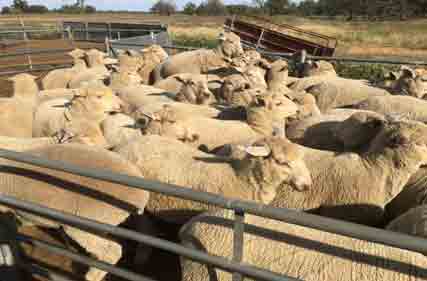 Tto help producers get a better understanding of the impact some sheep health conditions have on the carcass, Animal Health Australia (AHA) and the Department of Primary Industries and Regions (PIRSA) have developed a virtual reality tool for producers, “Sheep Health Conditions – Carcass Impacts”.
Tto help producers get a better understanding of the impact some sheep health conditions have on the carcass, Animal Health Australia (AHA) and the Department of Primary Industries and Regions (PIRSA) have developed a virtual reality tool for producers, “Sheep Health Conditions – Carcass Impacts”.
Six conditions are showcased – pleurisy/pneumonia, sheep measles, grass seeds, arthritis, rib fractures and vaccination lesions. Within the tool, there are also fact sheets which include further information including how producers can prevent or manage each condition on their property.
The visualisation tool was developed to complement PIRSA’s Enhanced Abattoir Surveillance (EAS) project and AHA’s National Sheep Health Monitoring Project (NSHMP) – both projects aimed at collecting and reporting on the incidence of sheep health conditions that present at the abattoir.
South Australian Minister for Primary Industries and Regional Development David Basham said the tool was a practical example of innovative agricultural technology at work.
“Supported through the State Government’s Red Meat and Wool Growth program, this type of digital engagement with primary producers aligns with our vision for AgTech in this state.
“We know that primary producers can see a significant increase in productivity and profitability through the adoption of AgTech on farm, and we want SA to be at the forefront of that.”
AHA’s Biosecurity Extension Manager Dr Emily Buddle, who has been managing the project, explains how the tool will help producers visualise the impact conditions can have on a carcass and, in turn, their bottom line.
“Traditionally, we have relied on taking producers through an abattoir to increase their understanding of how animals are processed and the impact that health conditions can have on meat quality.
“While there is nothing better than an in-person experience, getting producers to an abattoir may be a difficult exercise,” she said. “Even if the opportunity presents itself, health conditions may not be present in the sheep that are being processed.”
Program Manager for the Red Meat and Wool Growth Program Emily Mellor is excited to see an opportunity for increased engagement with the data collected through the NSHMP and EAS projects.
“Providing a visual representation of how these health conditions present on a carcass allows producers to get a better understanding of what it means for the quality of the meat they are producing.
“Being able to see the potential impact is important if we want producers to change or introduce new practices to prevent these conditions in the future,” she said.
Check out the Sheep Health Conditions – Carcass Impacts tool HERE
